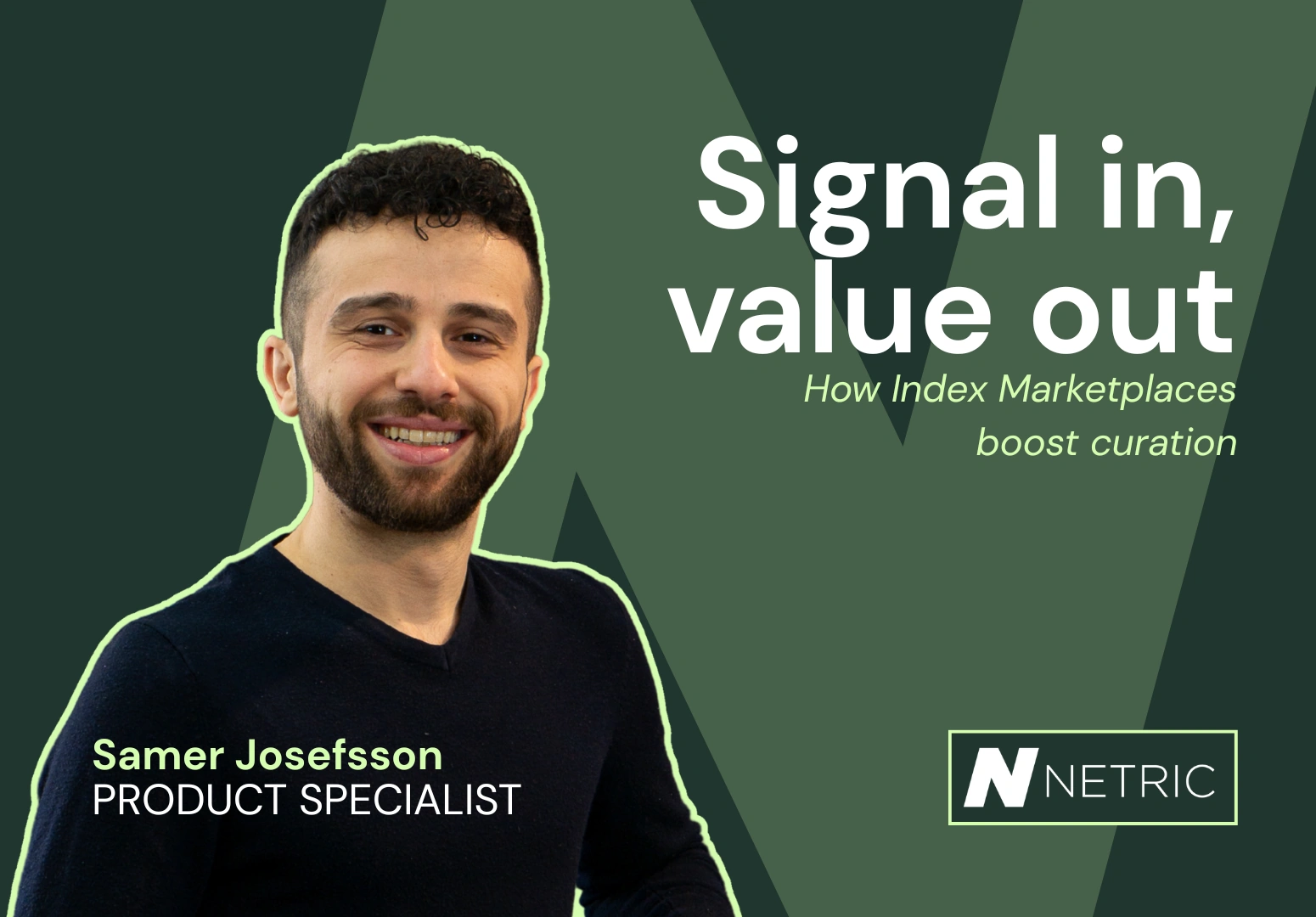Signal in, value out
How Index Marketplaces boost curation

At our recent Stockholm Programmatic Summit 2025, Kristina Gubanov, VP of Global Operations at Index Exchange, made a compelling case for why curation belongs on the sell side, and why environments like Index Marketplaces enable this to happen at scale.
The brief: move decisioning upstream, preserve signals at source, and turn more impressions into working media without adding fees or friction. “We only win if our partners win,” Kristina said - a principle that reflects how Netric approaches collaboration: enabling, not gatekeeping.
The open internet is vast and unforgiving: we see 500+ billion requests per day, with bursts of 20 billion queries per second. At that scale, infrastructure, not just algorithms, determines who can curate meaningfully, and rebuilding that footprint is prohibitive for many.
Launching a new company tomorrow to build sell-side curation itself would require a huge effort. Onboarding 3,000+ publishers and maintaining those relationships, procuring and running fleets of servers, and then hiring the engineering muscle to stitch it all together and harden those systems - this all takes decades.
In short, curation at scale sits on top of that foundation rather than reinventing it. And that’s exactly why using a mature SSP is faster, more cost-effective, and less risky. At Netric, we see this shift unfolding daily across the Nordic market, where publishers and buyers alike are looking for more control and transparency.
From curation to sell-side decisioning
Curation has become a buzzword, but here, it’s a practical path into a bigger shift: sell-side decisioning. The idea is simple: enrich, filter, and package supply before it enters the auction. But you need to do all this at the start of the flow of supply in order to keep context, intent, and quality intact while recovering value that usually leaks downstream. Put simply, you need to apply data and decisioning at the very top of the funnel, when there’s the most inventory to choose from, so every subsequent step benefits.
Kristina argues this shift is the most consequential since header bidding. It’s a step-change that moves control and intelligence upstream on the sell side, rather than waiting for it on the buy side.
It starts with streaming premium, MFA-free inventory from the thousands of trusted publishers mentioned above. Then you can start to apply first- and third-party data, creative or format logic, decisioning algorithms, and of course, the ‘special sauce’ that is curation expertise.
Next, you bundle this into a single addressable deal and route to your preferred DSP. Crucially, the “pre-decision” happens before the auction fires, so what reaches demand is already smarter and more likely to deliver the buyer’s outcome. Curation can exist on other platforms, but as Kristina argues, the sell side is absolutely the right place for decisioning.
Signal preservation meets cost-efficiency
Adtech runs on signals. But regulation, platform changes, and browser policies have reduced the information that comes into play in the bidstream, and so the value of otherwise quality impressions erodes by the time they reach demand. Publishers, however, still own rich first-party data. Applying that data on the sell side - with precision and control - lets publishers attach it to deals, set prices, and respect guardrails (ad quality, blocks, floors, pricing). This suddenly takes you from signal loss to lift, and leads to better matches, higher win rates, and less waste.
At Netric, we emphasise efficiency at every stage of the supply path: there are no added fees to use the infrastructure or curation tools, meaning more of each advertiser’s budget reaches the impression and, ultimately, the publisher. It’s a model built for collaboration - improving transparency, removing barriers, and ensuring more value flows back to those creating quality content. The focus is on enabling innovation and long-term growth across the open internet, not adding layers of cost or complexity.
Control for publishers, value for buyers
While everything a publisher has in place across existing demand paths can remain intact, inventory controls, data permissions, floors and pricing all stay on the sell side. First-party data is not sprayed into the bidstream; it is attached to a deal, with the publisher deciding exposure and price. That’s how you increase yield without compromising trust.
Some buyers approach curation simply as a more intuitive way to manage deals - and that’s perfectly valid. But the real potential lies in using sell-side context from the start: applying quality filters, supply-path preferences, sustainability signals, creative requirements, brand-safety settings, and attention metrics before an auction even begins. Because our curated marketplaces connect seamlessly with all major DSPs, buyers get smarter access to quality supply without disrupting their existing workflows - resulting in stronger performance and a more efficient path to value.
And this is not a thought experiment. Over 160 marketplaces are already running and generating incremental demand.
Build where the data lives
In summary, curation does not equal sell-side decisioning, but it’s a powerful and scalable entry point. It’s time to put decision-making where the data is richest and the controls are clearest. Use that position to restore signal utility, compress non-working costs, and give buyers better-matched opportunities. And keep the marketplace open, with every impression going through a DSP, no extra ‘adtech tax’, and publisher controls intact. That’s how you turn a structural shift into durable ROI, not just another acronym.
At Netric, we’re helping publishers and buyers across the Nordics build where the data lives - restoring signal utility, reducing waste, and creating better matches between quality supply and real demand. Ready to see how curated marketplaces can unlock more value for your business? Chat with us today.


